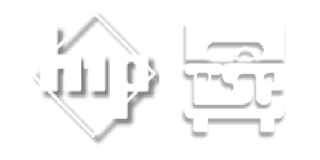IS YOUR SOLID WASTE HAZARDOUS
There is no requirement under the 40 CFR Environmental Protection Agency Regulations to test any unwanted material that is Listed or to insure that it is Ignitable, Corrosive, Reactive or Toxic hazardous waste. The requirement is to properly identify, manage and disposed certain solid wastes as hazardous waste
“The hazardous waste determination for each solid waste must be made at the point of waste generation, before any dilution, mixing, or other alteration of the waste occurs,” 40 CFR 262.11(a)
Listed Hazardous Waste
It’s listed, in 40 CFR, Sections 261.31 through 261.33 , that’s the point, it’s listed for a reason. These are a select group of used solvents, processes that tend to generate questionable wastes and discarded or unusable pure chemicals that are, (with the exception of F003), always hazardous waste as F-coded, K-coded, P-coded and U-coded respectively. Once your waste is listed there’s really no reason to test it, unless you’re going for an exclusion.
Because, if the solid waste is listed, but does not meet a hazardous waste characteristic a person may file a petition for delisting in Section 260.22 by demonstrating to the Administrator that the waste from this particular site or operation is not hazardous.
So for listed waste in 261.31 through 261.33, EPA in 40 CFR 262.11 requires that hazardous waste determination and record-keeping at the very least, must include the solid waste’s origin, composition, process, feedstocks, and any other reliable and relevant information.
Characteristic Hazardous Waste
For characteristic D-coded hazardous waste the generators may apply the materials, constituents, their uses and the processes used to generate waste. In that, the identification of hazardous waste in 40 CFR 261.21 for ignitable, 261.22 for corrosive and 262.23 reactivity and 261.24 toxicity, can include process knowledge, feedstocks and other inputs to the production process, knowledge of products, by-products, intermediates produced during the manufacturing, chemical or physical characterization and other properties of the waste.
However, if the generator’s knowledge is inadequate to make a proper determination for characteristic waste, the person must test the waste according to the Subpart C of 40 CFR Part 261 Characteristics of Hazardous Waste in Sections 261.21 ignitable, 261.22, corrosive, 261.23 reactivity and 261.24 toxic.
Even very Small Quantity Generators (VSQG) under 40 CFR 262.14 are required to identify and record their solid waste as hazardous under the 40 CFR 262.10(a)(1)(i) Independent requirements to ensure proper generator status compliance.
So, yeah generators can use generator waste knowledge to identify your solid waste as hazardous waste. However, If you’re asking me if you can use generator waste knowledge to identify your solid waste as non-hazardous? Again sure, but now if you’re wrong, in other words your waste determination is not correct, for every container, you're in violation.
The brand new 2021/2022 Hazardous Materials, Substances and Wastes Compliance Guide is now available for shipping and included in your training kit at The Live Zoom Hazardous Materials, Substances and Waste Compliance Seminar.
Looking forward to seeing you soon.
Thank you for your support.
Be safe.
Robert J. Keegan
Publisher and President
Hazardous Materials Publishing Company
Transportation Skills Programs









